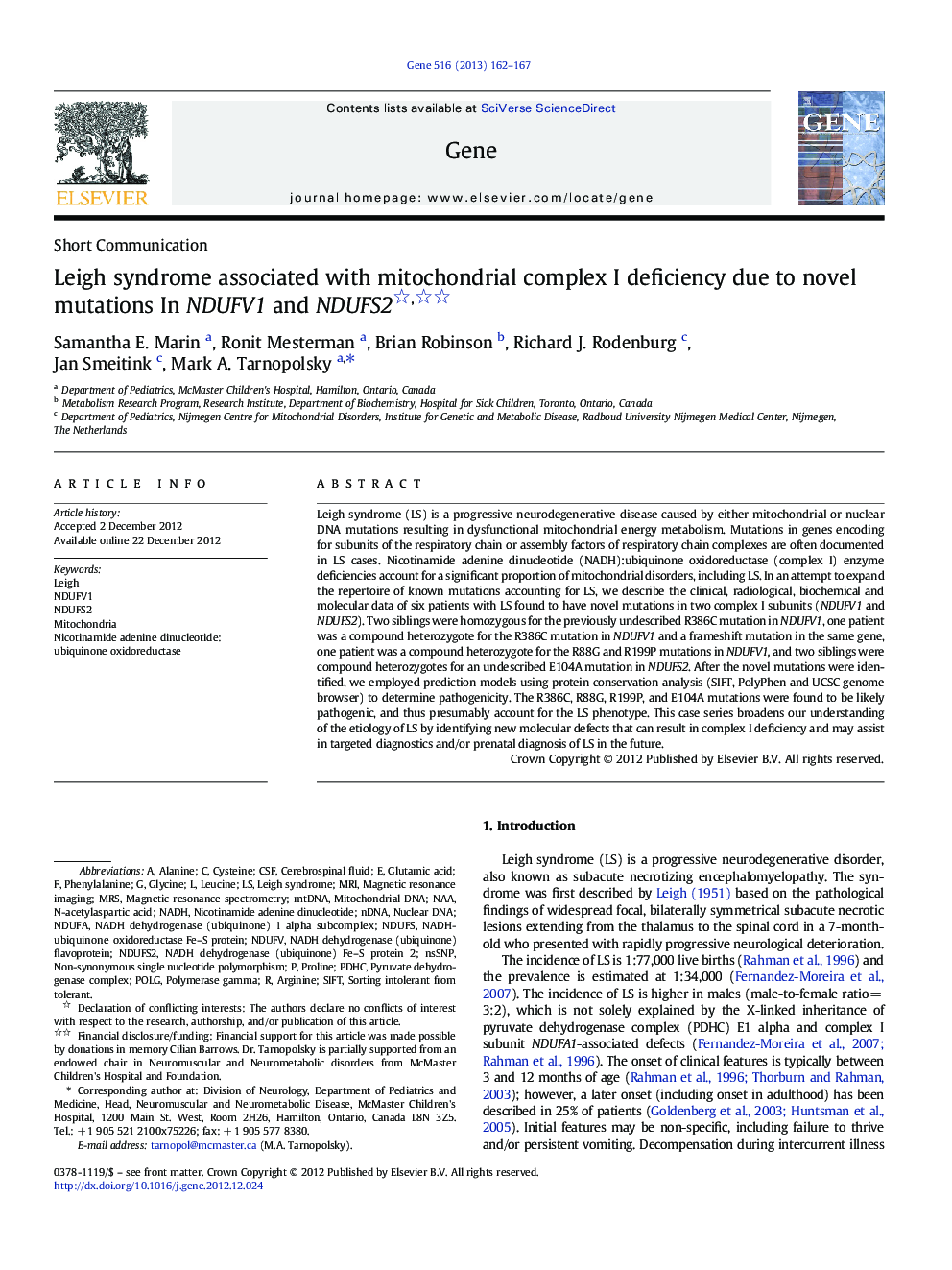| کد مقاله | کد نشریه | سال انتشار | مقاله انگلیسی | نسخه تمام متن |
|---|---|---|---|---|
| 5906783 | 1159984 | 2013 | 6 صفحه PDF | دانلود رایگان |

Leigh syndrome (LS) is a progressive neurodegenerative disease caused by either mitochondrial or nuclear DNA mutations resulting in dysfunctional mitochondrial energy metabolism. Mutations in genes encoding for subunits of the respiratory chain or assembly factors of respiratory chain complexes are often documented in LS cases. Nicotinamide adenine dinucleotide (NADH):ubiquinone oxidoreductase (complex I) enzyme deficiencies account for a significant proportion of mitochondrial disorders, including LS. In an attempt to expand the repertoire of known mutations accounting for LS, we describe the clinical, radiological, biochemical and molecular data of six patients with LS found to have novel mutations in two complex I subunits (NDUFV1 and NDUFS2). Two siblings were homozygous for the previously undescribed R386C mutation in NDUFV1, one patient was a compound heterozygote for the R386C mutation in NDUFV1 and a frameshift mutation in the same gene, one patient was a compound heterozygote for the R88G and R199P mutations in NDUFV1, and two siblings were compound heterozygotes for an undescribed E104A mutation in NDUFS2. After the novel mutations were identified, we employed prediction models using protein conservation analysis (SIFT, PolyPhen and UCSC genome browser) to determine pathogenicity. The R386C, R88G, R199P, and E104A mutations were found to be likely pathogenic, and thus presumably account for the LS phenotype. This case series broadens our understanding of the etiology of LS by identifying new molecular defects that can result in complex I deficiency and may assist in targeted diagnostics and/or prenatal diagnosis of LS in the future.
⺠Complex I associated Leigh syndrome (LS) is often due to nuclear mutations. ⺠NDUF mutations are increasingly being found in association with LS. ⺠The novel NDUFV1 and NDUFS2 mutations described will allow for diagnosis and counselling. ⺠NDUFV1 and NDUFS2 regions appear to be “hotspots” for complex I associated LS.
Journal: Gene - Volume 516, Issue 1, 1 March 2013, Pages 162-167